Tom's Hardware Verdict
Lexar’s SL660 Blaze is an aesthetically pleasing portable gaming SSD with RGB and software support. Its performance is generally good, but it has a few pitfalls and is relatively expensive.
Pros
- +
Nice aluminum design with RGB
- +
Portable and shock-resistant
- +
Nice accessories, including a pouch and dock
- +
Good warranty and software support
Cons
- -
Pricey
- -
Weak performance in some cases
Why you can trust Tom's Hardware
Lexar’s SL660 Blaze is the company's latest portable drive for gaming and comes in 512GB and 1TB capacities. The drive comes with resplendent RGB lighting and includes software support combined with a selection of materials and styling to sell as a 'gaming' drive that will compete for a spot on our list of best external SSDs.
The SL660 Blaze reminds us a lot of the Kingston XS2000, they share the same hardware, but it comes with some additional features. It also competes with the ADATA SE900G, which also comes with RGB lighting but has a bulkier package.
As with the XS2000, SE900G, and other portable drives, convenience is the name of the game. Alternatively, you could purchase your own drive and enclosure independently and save money by combining the two yourself. Of course, SATA-based options of both types also often remain viable, but sometimes it’s nice to have 2GBps of bandwidth at your fingertips.
Let’s see how that works out here.
Specifications
| Product | 512GB | 1TB |
|---|---|---|
| Pricing | $119.99 | $189.99 |
| Capacity (User / Raw) | 500GB / 512GB | 1000GB / 1024GB |
| Form Factor | M.2 2280 | M.2 2280 |
| Interface / Protocol | USB-C / USB Gen3 2x2 | USB-C / USB Gen3 2x2 |
| Included | USB Type-C to Type-C, USB Type-C to Type-A cables Detachable Stand | USB Type-C to Type-C, USB Type-C to Type-A cables Detachable Stand |
| Controller | SM2320 | SM2320 |
| DRAM | N/A | N/A |
| Memory | Micron 96L TLC | Micron 96L TLC |
| Sequential Read | 2,000 MBps | 2,000 MBps |
| Sequential Write | 1,900 MBps | 1,900 MBps |
| Random Read | N/A | N/A |
| Random Write | N/A | N/A |
| Security | 256-bit AES (Software) | 256-bit AES (Software) |
| Power | Bus-powered | Bus-powered |
| Endurance | Shock resistant | Shock resistant |
| Endurance (TBW) | N/A | N/A |
| Dimensions | 112.6 x 57.4 x 10.6mm (w/o stand) | 112.6 x 57.4 x 10.6mm (w/o stand) |
| Weight | 80g | 80g |
| Part Number | LSL660X512G | LSL660X001T |
| Warranty | 5-Year | 5-Year |
The Lexar SL660 Blaze has just two capacities: 512GB and 1TB. The price per gigabyte at the time of writing, which is for pre-orders, is around $0.20 per gigabyte. This is more pricey than the Kingston XS2000, which has fewer frills while being smaller and weighing less. The SL660 Blaze is rated for up to 2.0/1.9GBps for sequential reads and writes, in line with the XS2000. We would expect these write speeds to dip with extended writes once the SLC cache is exhausted.
As with the XS2000, the SL660 Blaze has a five-year warranty and is rated for shock resistance. In addition, the controller itself has typical data protection with SMI’s NANDXtend, a patented technology that has similarities to techniques used on other controllers. This gets the most endurance out of the flash through LDPC error correction and can correct errors through RAID parity. Lexar also offers 256-bit AES encryption, but this is software-based, so it won't be as performant.
Software and Accessories
The SL660 Blaze comes with more than a few items. It has both Type-C to Type-C and Type-C to Type-A USB cables and a detachable stand. These are both convenient as you can dock the drive when near your computer, and the drive will be compatible with two common types of USB ports. The drive also comes with a nice pouch for added convenience and protection, although this may increase overall bulk. The competing Kingston XS200, for its part, did include a rubber sleeve.
Get Tom's Hardware's best news and in-depth reviews, straight to your inbox.
The drive also comes with an SSD toolbox, the Lexar SSD Dash, and support for software encryption through Lexar’s DataShield. We have previously stated that hardware encryption with a Self-Encrypting Drive (SED) tends not to be a priority for consumer drives and is otherwise potentially inconsistent. Lexar offers a software solution as a checkbox for their feature list, but it is actually usable and useful even if it’s something you could do yourself on other drives with the appropriate software. Likewise, we like to have a SSD toolbox even if it’s generally unnecessary.
A Closer Look
The USB interface can also be its own bottleneck regardless of the internal SSD. Portable drives are also usually streamlined and made to be efficient, which in other words means they often have a DRAM-less design that would benefit from the performance-boosting Host Memory Buffer (HMB) tech — but that doesn't work over the USB interface. Both of these issues present challenges for external drives: Most users use these types of drives for large files or image backups, which are essentially large, sequential file transfers. This type of work can be limited by the interface or by the sequential write speed of the drive, with the latter being impacted by the lack of HMB.
Most previous portable drives came with ASMedia’s bridge chips, such as the ASM2362 and ASM2364 for 10Gbps and 20Gbps, respectively. Portable units tend to have an independent drive with its own controller and a separate bridge chip to handle communication with the host, for example, with two lanes of PCIe 3.0 on one side and USB 3.2 Gen 2x2, at up to 20 Gbps, on the other. The newer SM2320 chip from Silicon Motion, as used on the SL660 Blaze and XS2000, instead provides an embedded or hybrid design with everything in one package. This pairs very well with the streamlined intentions of a portable SSD.
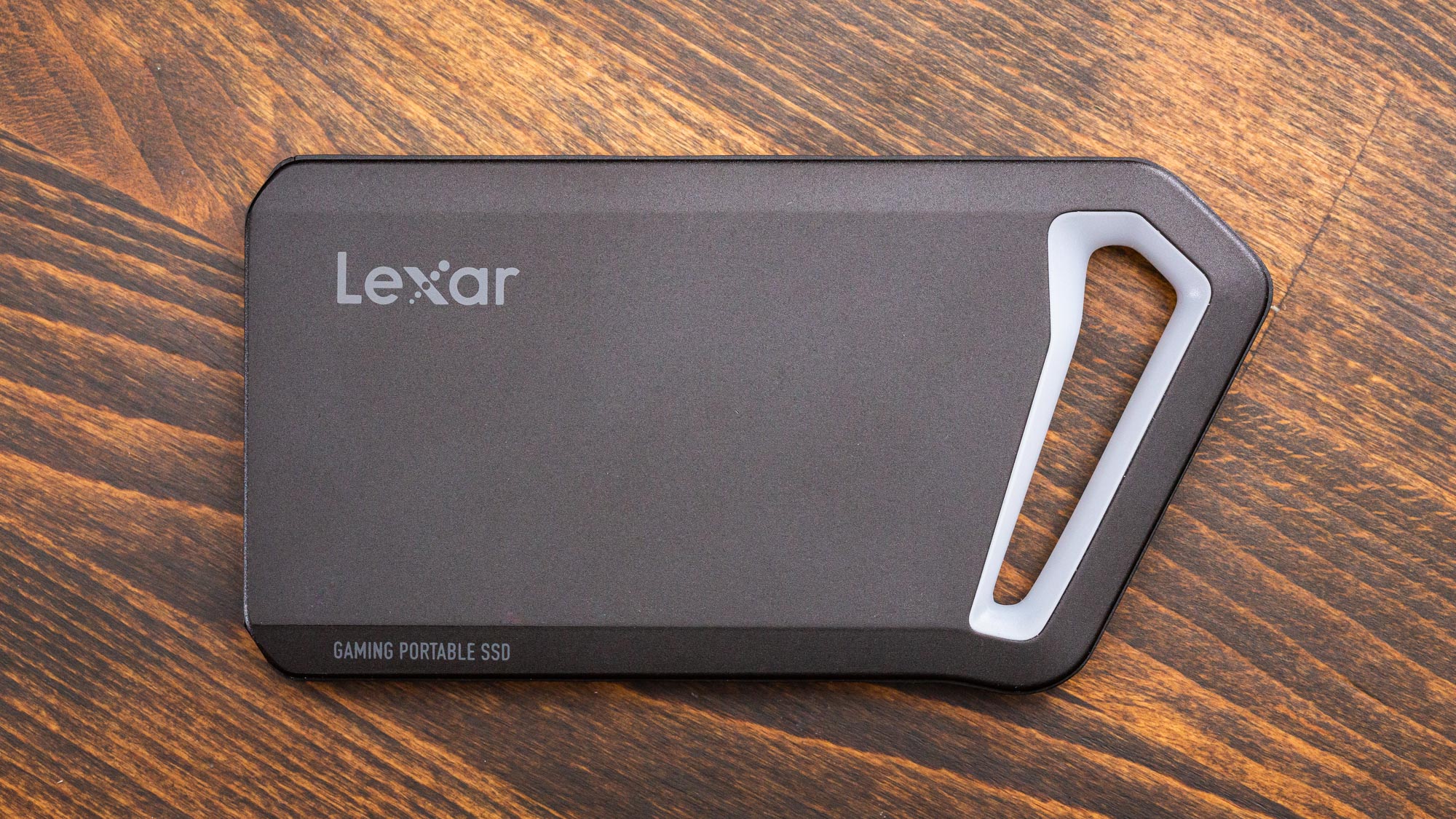
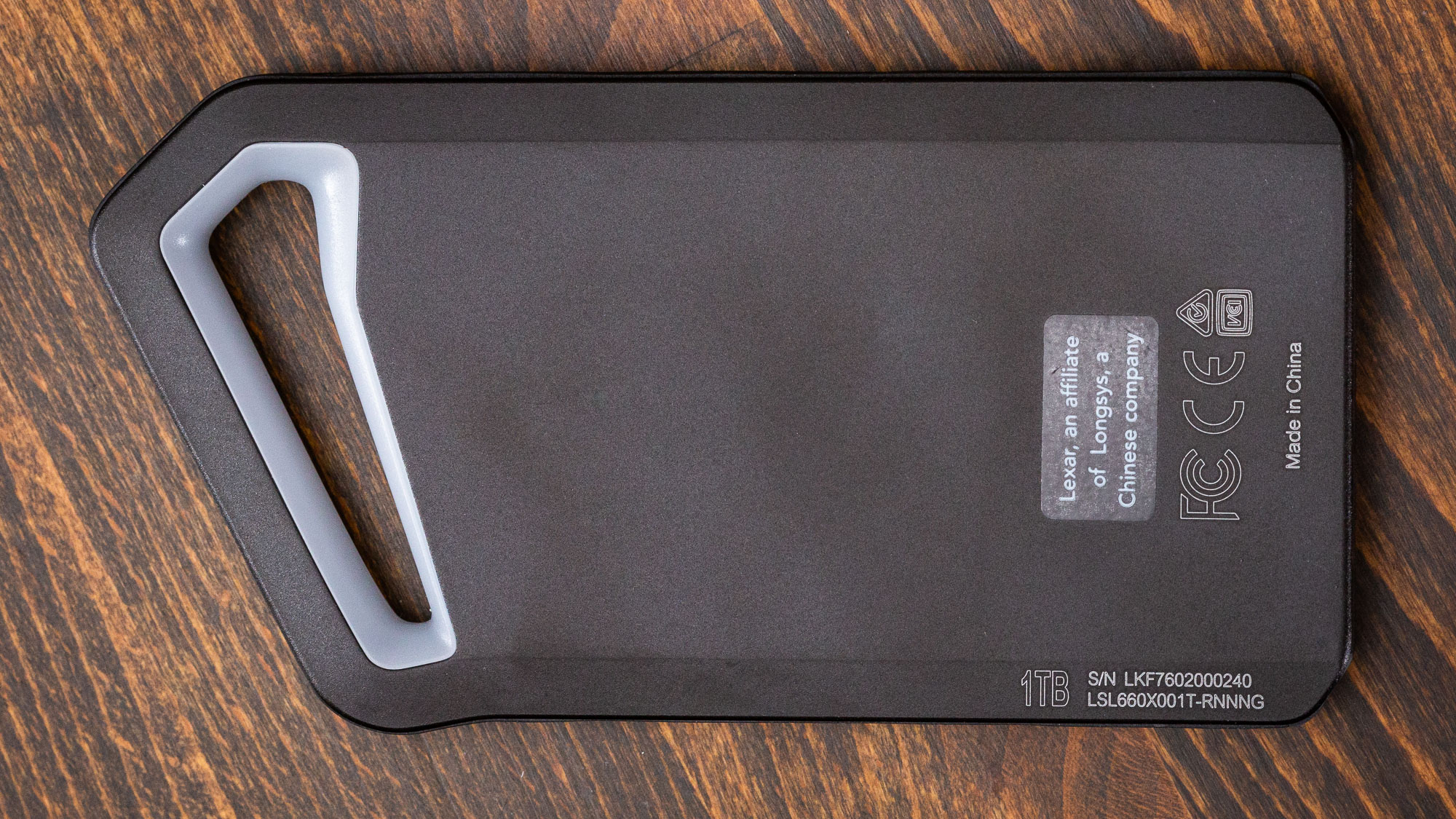
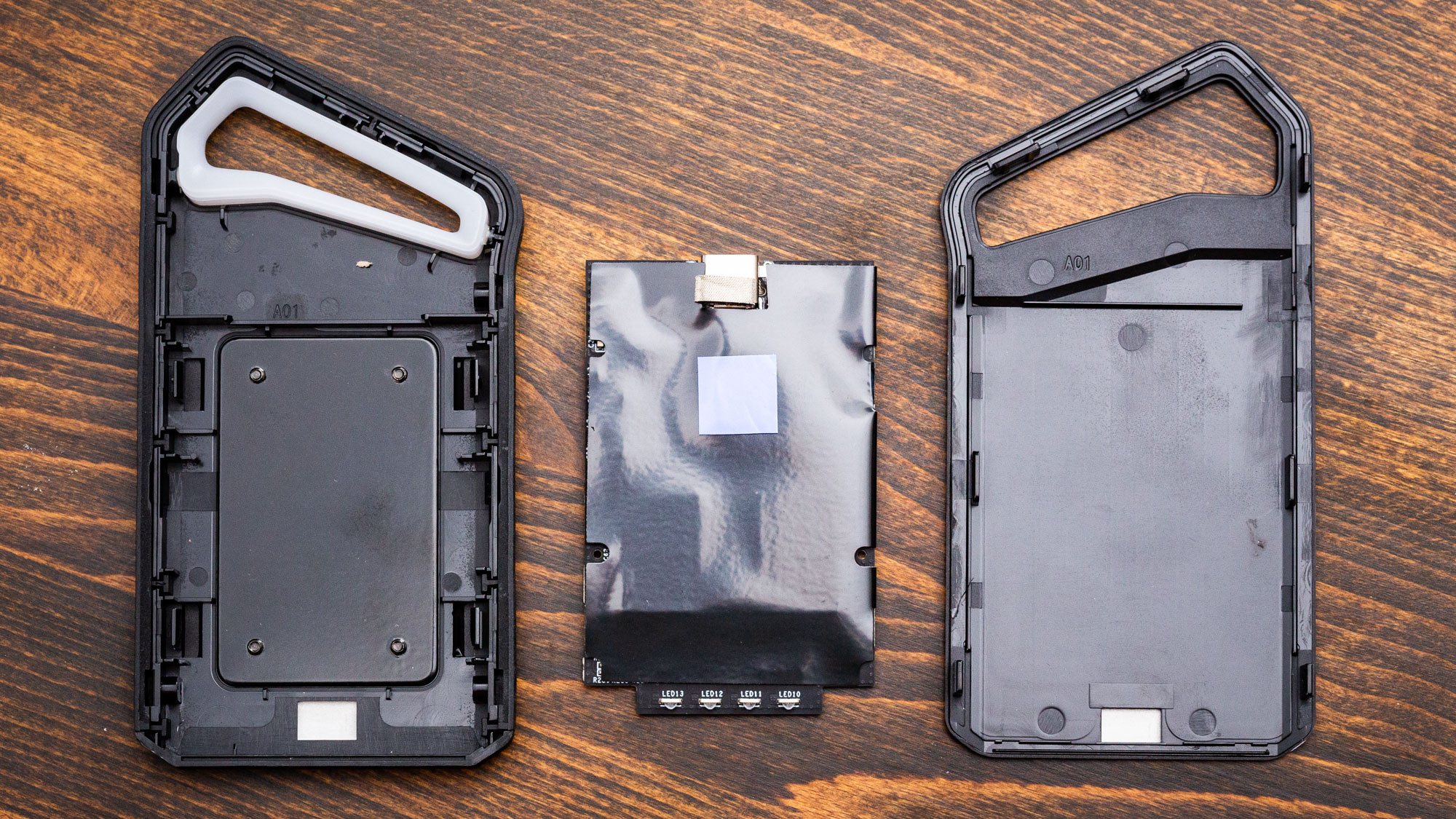

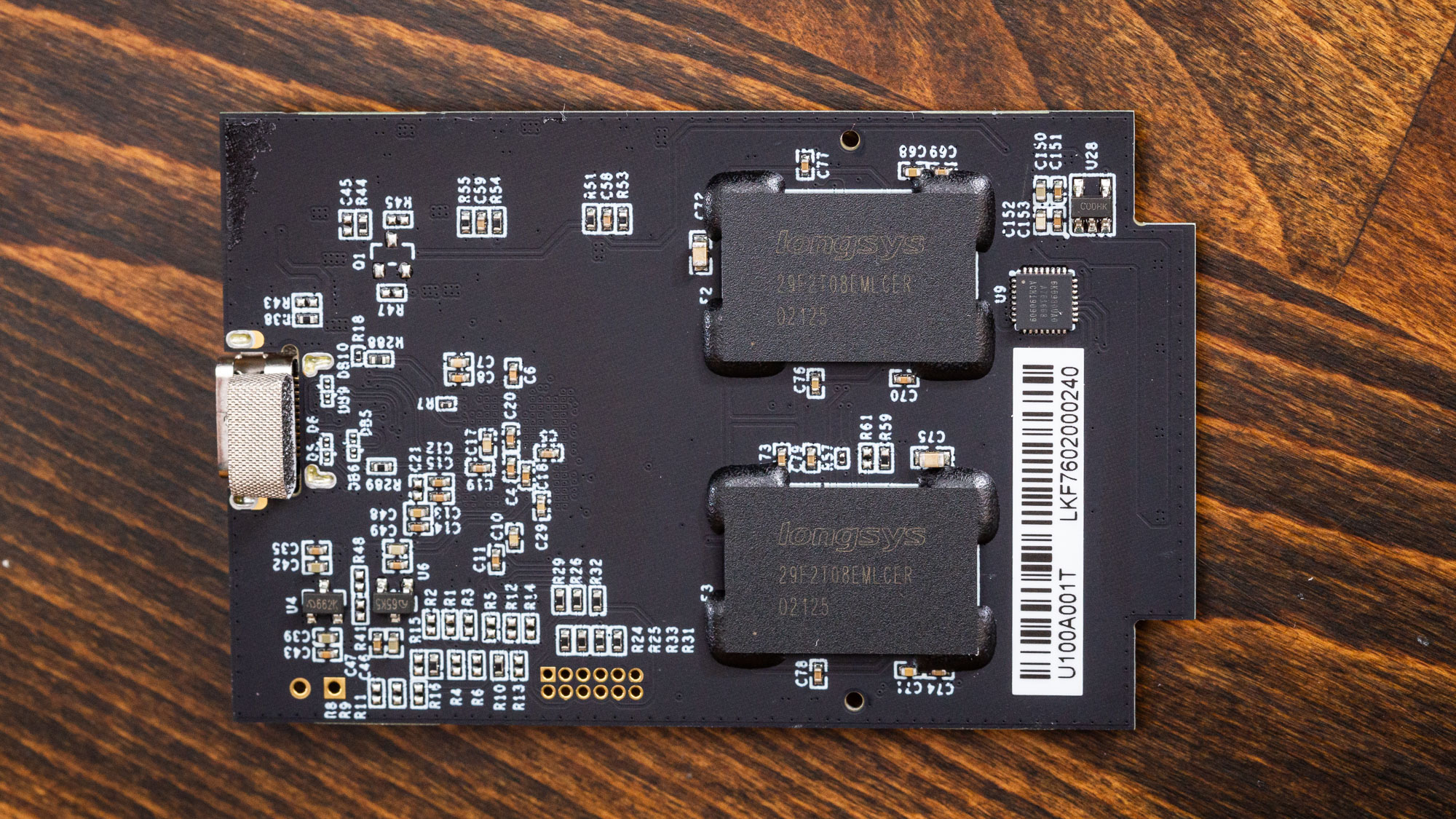
The SL660 Blaze has a sleek, aluminum exterior that certainly lends itself to the gaming aesthetic, even without RGB enabled. It’s otherwise clean, with the rear side listing the capacity/model and serial number. The interior shares the black coloring with a bit of protection. Of course, this is not a drive you would have to shuck, given the nature of the prominent SM2320 controller. The black PCB has no DRAM but has four flash packages with two on each side.
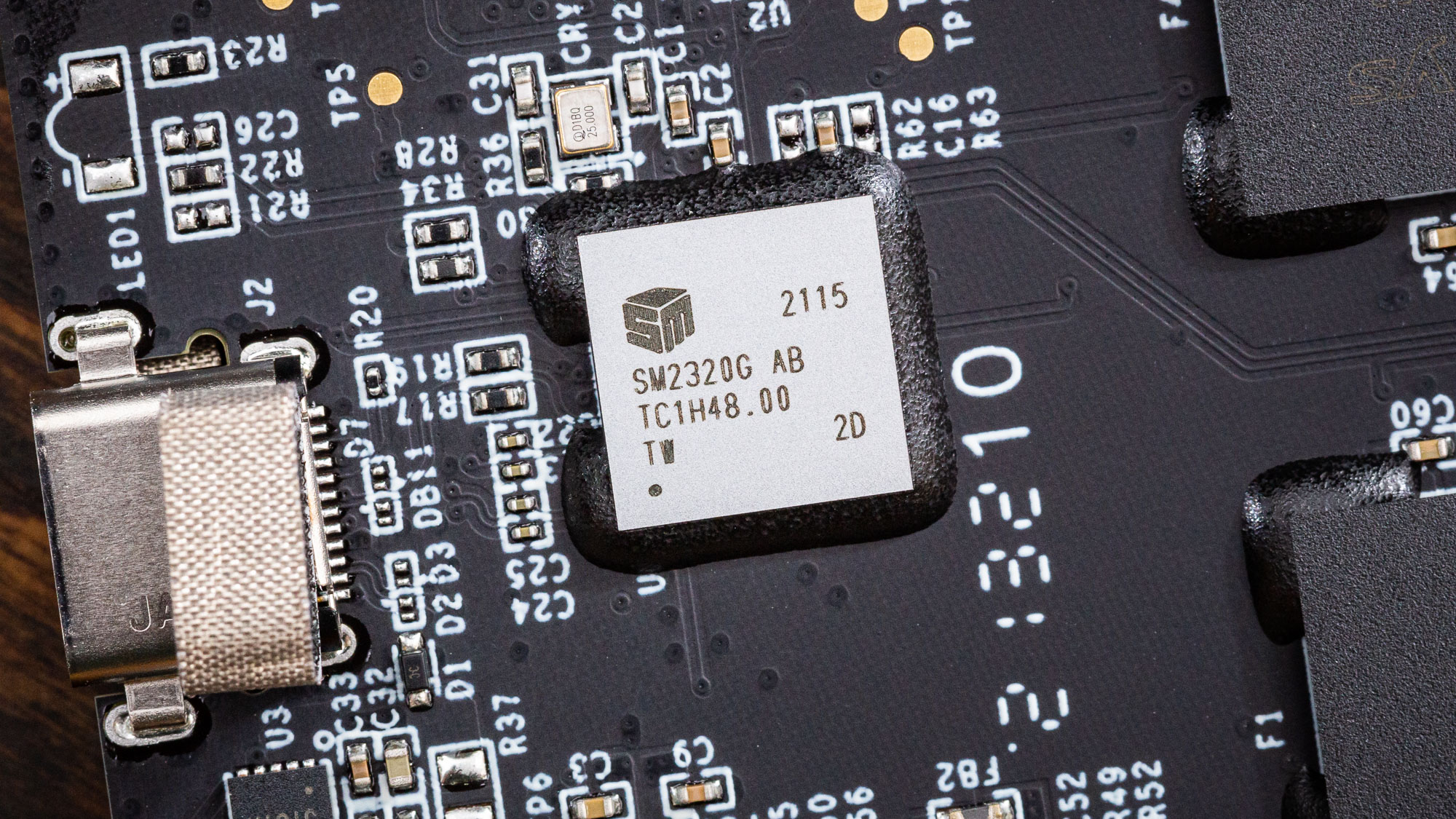

The controller, labeled SM2320G, looks to have been manufactured about a year ago. SMI is proud of this quad-channel design, able to manage up to 4TB of flash in a tight 9x9 mm package. While there are disadvantages to having a single chip for a portable drive, the advantages of reduced size and cost generally outweigh them. We also see the four LEDs on the edge of the board, which, as tested, were not controllable but rather just shifted between various colors.
The flash modules are produced by Longsys and labeled 29F208EMLCER. From the “29,” we can tell this is Intel or Micron flash, as in MT29 from the IMFT days, at 2Tb or 256GB per chip in an 8-bit configuration for a total of 1TB. It’s similar to the 96-layer Micron TLC we saw on the XS2000. This is an older flash but is perfectly suitable for a quad-channel portable drive.
MORE: Best SSDs
MORE: How We Test HDDs And SSDs
MORE: All SSD Content

Shane Downing is a Freelance Reviewer for Tom’s Hardware US, covering consumer storage hardware.
